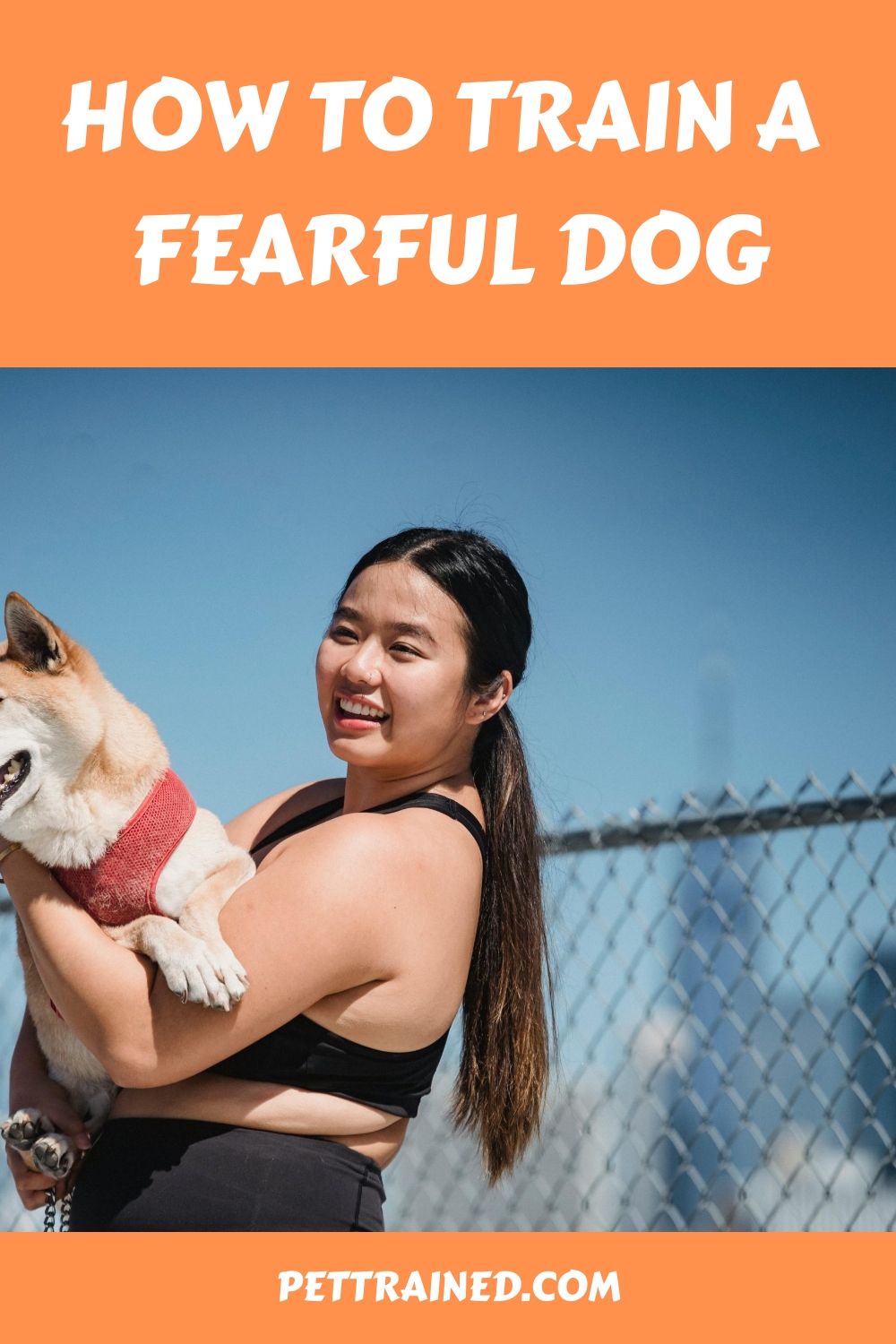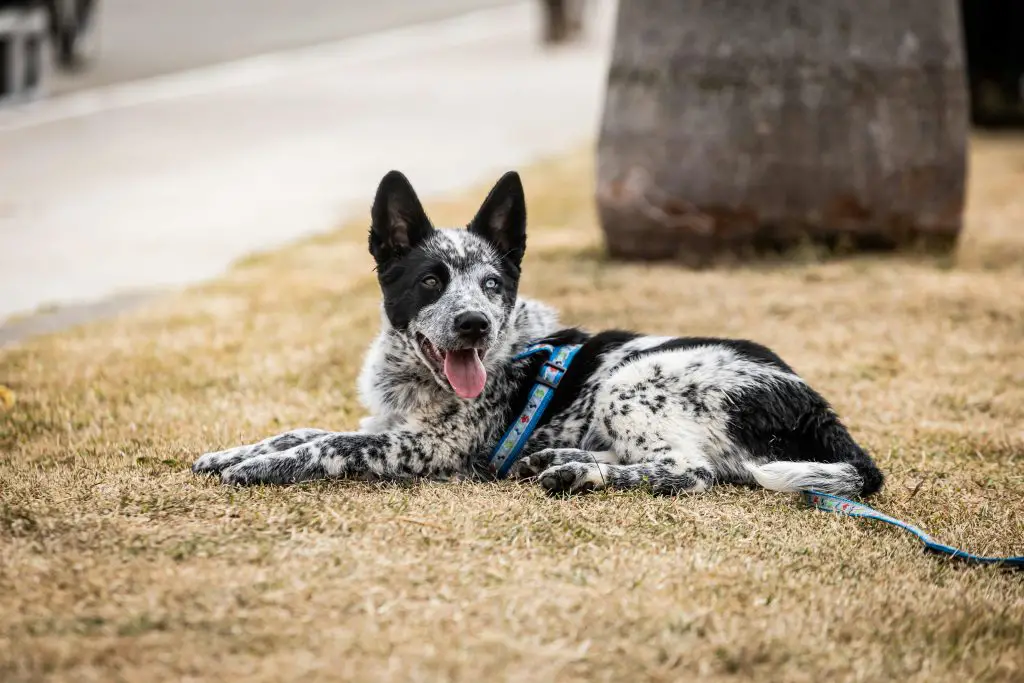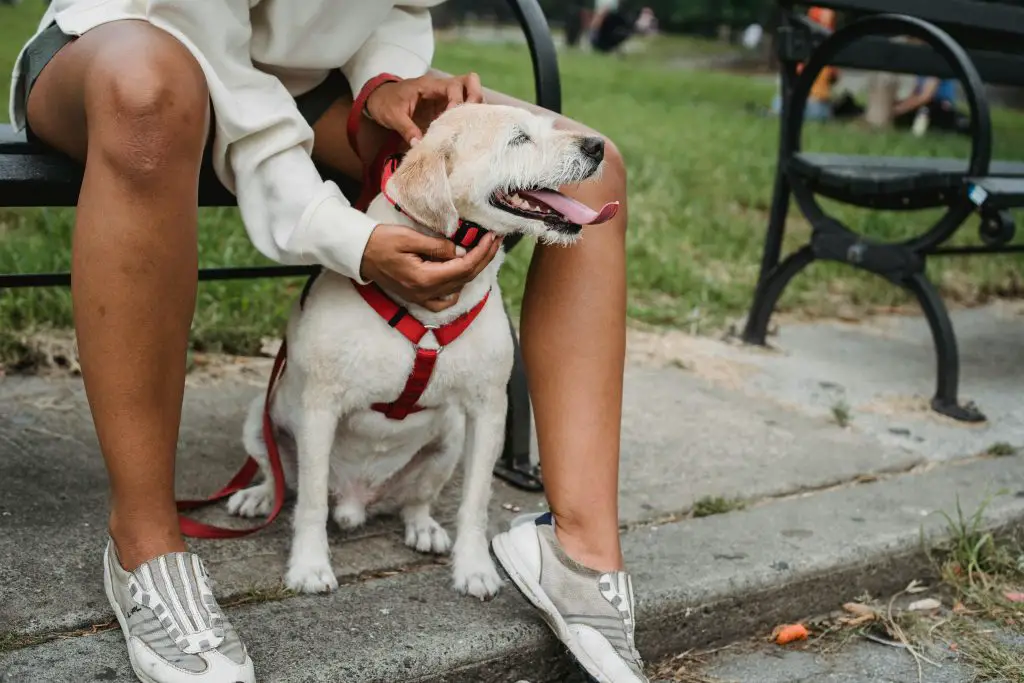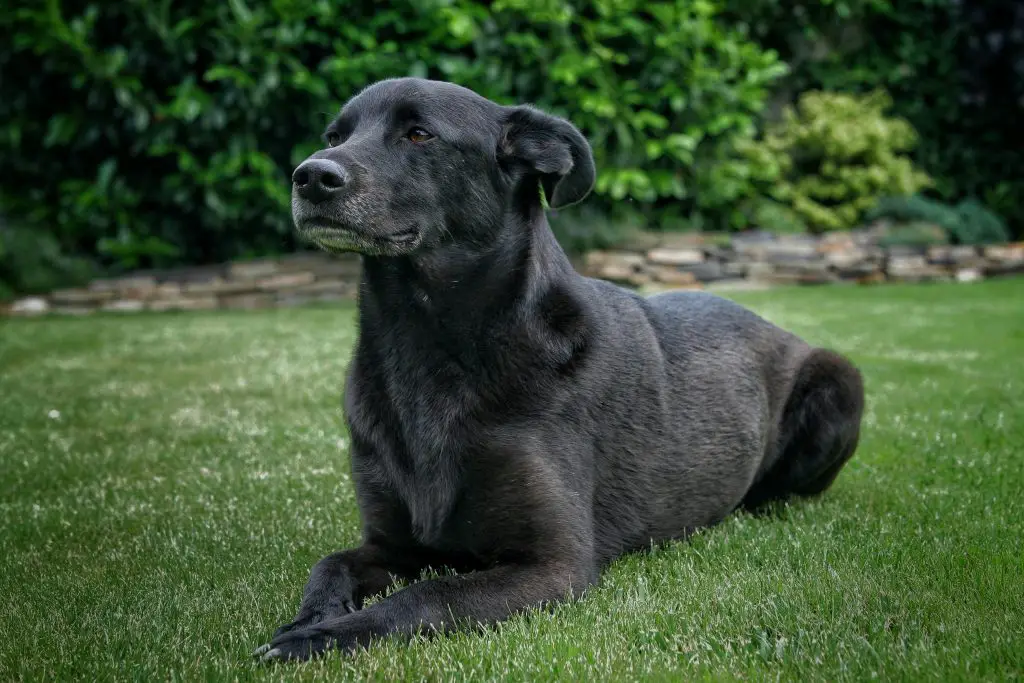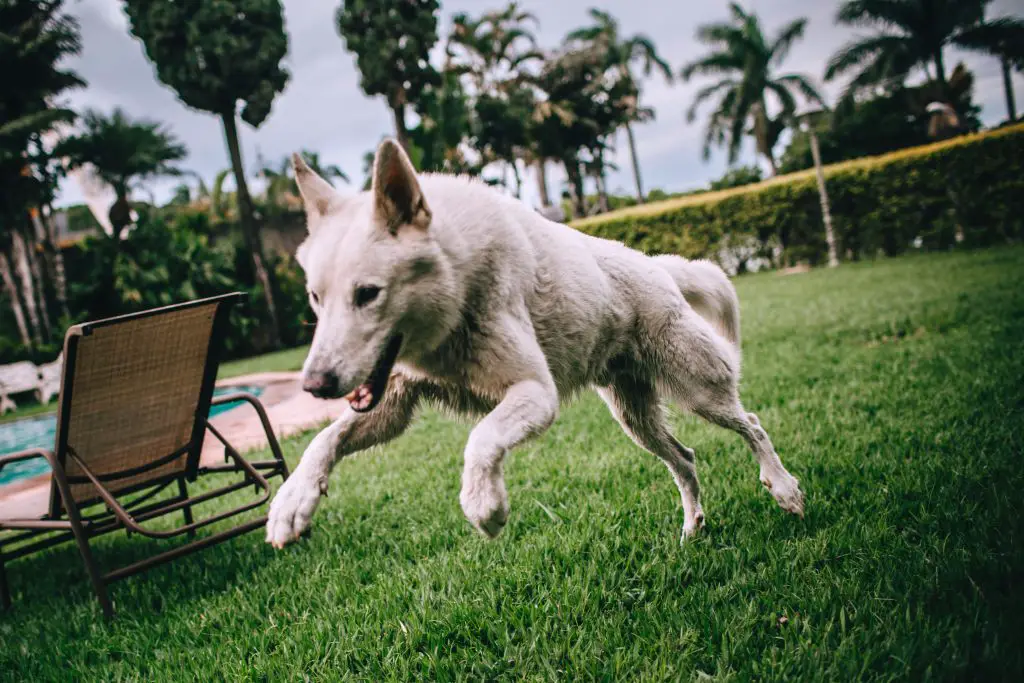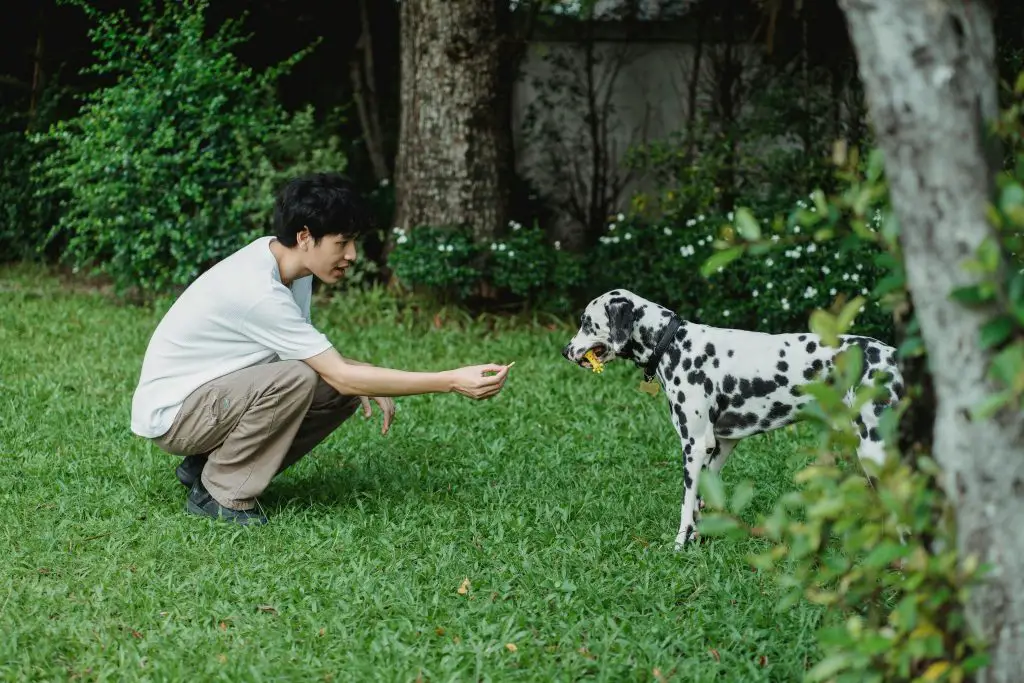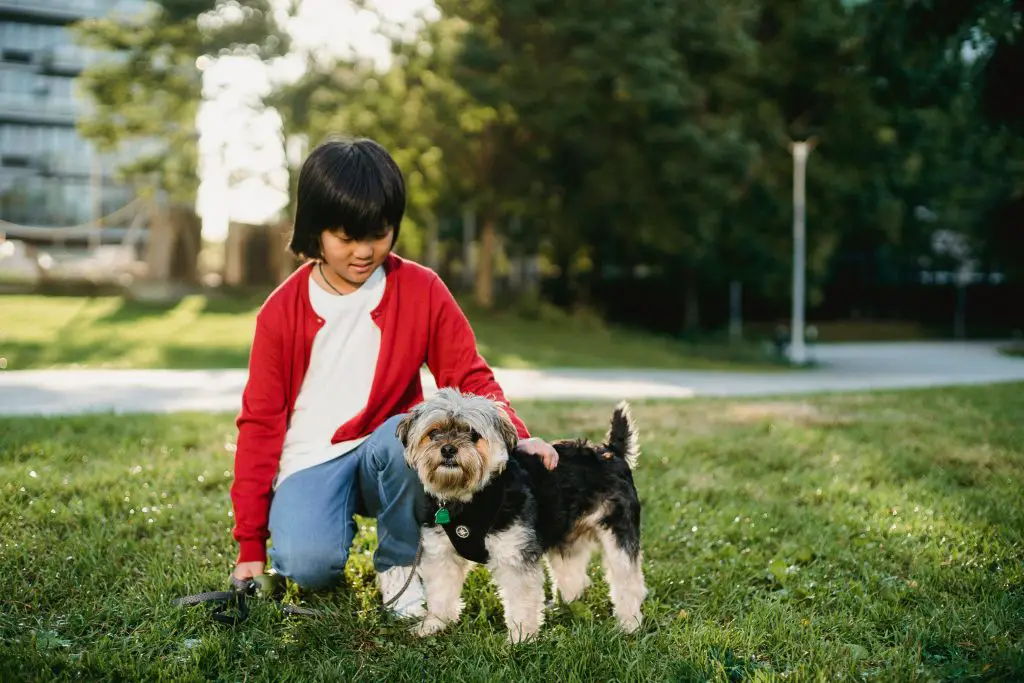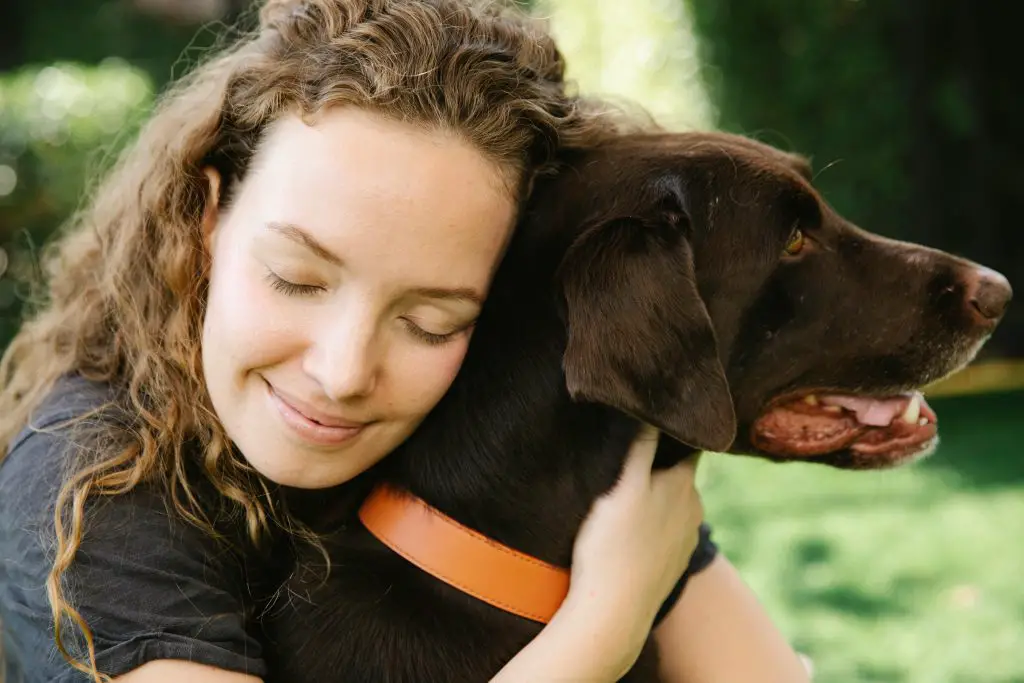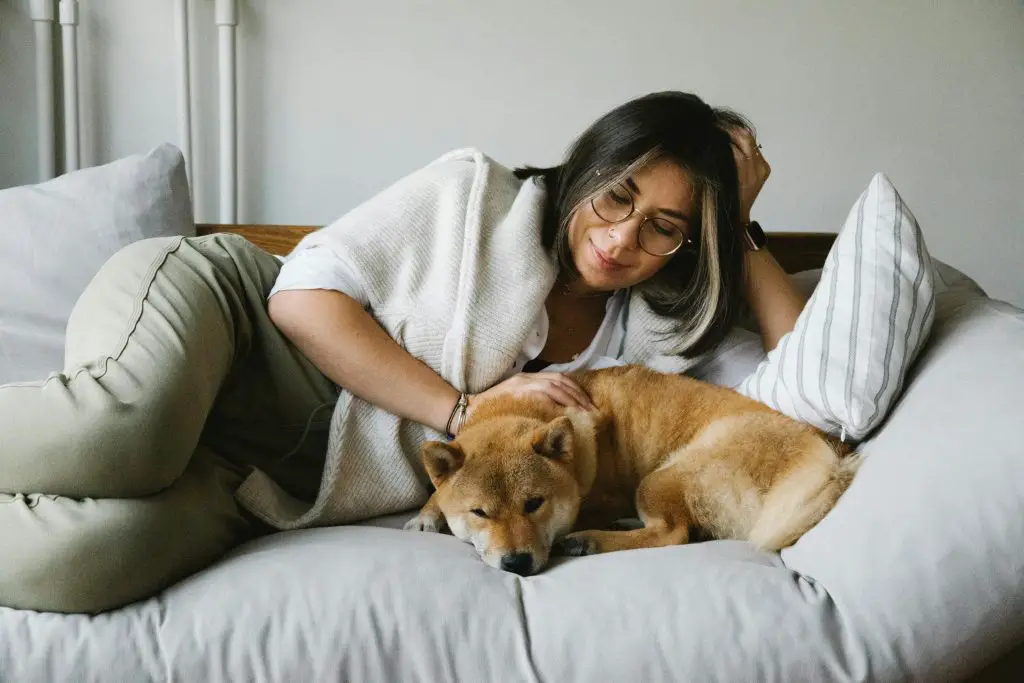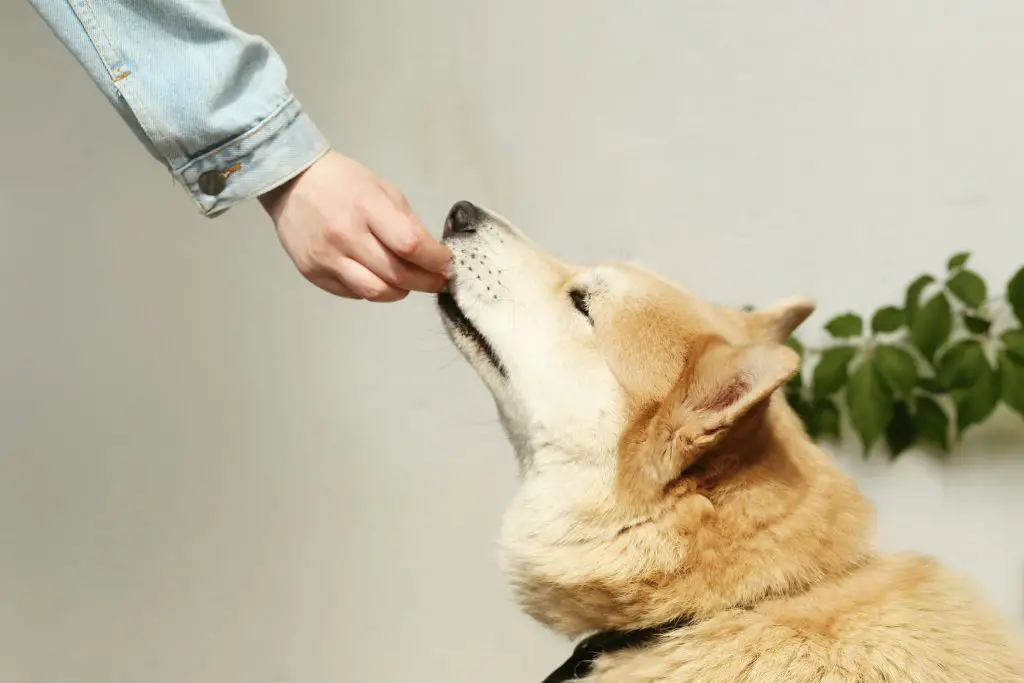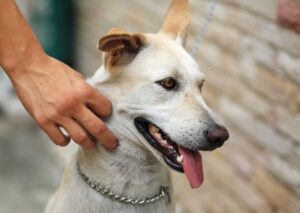You’re about to initiate a journey to transform your fearful dog’s life, and it starts with understanding the root of their fears. As you work with your dog, you’ll identify specific triggers that set them off, and it’s essential to create a safe environment where they can retreat when feeling overwhelmed.
By using positive reinforcement techniques, such as clicker training, you’ll encourage desired actions and begin to build trust. But, to effectively address their fears, you’ll need to take a strategic approach – one that requires patience, consistency, and a clear plan of action.
Table of Contents
Key Takeaways
- Establish a safe space for the fearful dog to feel secure and relaxed, equipped with comfort items and minimal distractions.
- Build trust through gentle encouragement, avoidance of overwhelming stimuli, and trust exercises that promote calmness and relaxation.
- Use positive reinforcement techniques like clicker training and reward systems to encourage calm behavior and associate it with positive outcomes.
- Gradually expose the fearful dog to anxiety triggers in a controlled environment, using incremental desensitization and counterconditioning techniques.
- Manage anxiety triggers by identifying specific stimuli, establishing a consistent daily routine, and teaching coping mechanisms to reduce anxiety.
How To Train A fearful Dog By Understanding Your Dog’s Fears
Many dogs exhibit fearful behavior, but understanding the underlying causes is crucial for addressing the issue. To help your dog overcome their fears, you need to identify the fear triggers that set them off. These can be anything from loud noises to strangers, other animals, or even specific environments.
Observe your dog’s body language closely, as it can provide valuable clues about what’s causing their fear. A tucked tail, raised hackles, or avoidance behaviors can all indicate that your dog is feeling anxious or fearful.
Separation anxiety is a common cause of fear in dogs, affecting 20-40% of them and often leading to destructive behavior or excessive vocalization when left alone.
This post contains affiliate links. However all the information provided on this site are my own honest opinions. See more in Disclaimer.
Once you’ve pinpointed the fear triggers, you can start to develop a plan to address them. It’s crucial to approach this process systematically and gradually, as rushing or pushing your dog too hard can exacerbate the problem.
How To Train A Fearful Dog By Building Trust and Confidence
As you work to build trust and confidence in your fearful dog, it’s vital to establish a safe space where they feel secure and relaxed.
This safe space will serve as a foundation for your training efforts, allowing you to use positive reinforcement techniques to reinforce desired behaviors and calm your dog’s fears.
Creating a consistent daily schedule for your dog can greatly reduce anxiety and promote a sense of security.
Establishing a Safe Space
Within the comfort of a well-designated safe space, your fearful dog can begin to let its guard down, allowing you to establish the foundation for a trusting relationship.
To create this safe zone, you’ll need to identify a quiet area in your home where your dog can retreat when feeling overwhelmed.
Also See:
Provide comfort items, such as familiar scents, secure bedding, and personal space, to promote stress reduction. Incorporate calming routines, such as gentle petting or soothing music, to help your dog relax.
Consistent routines are vital for providing security and stability to fearful dogs, so try to maintain regular feeding, walking, and bedtime schedules as part of your overall strategy.
Your dog’s safe space should be a private retreat, free from distractions and potential triggers. Sensory enrichment, such as calming aids or pheromone diffusers, can also be used to create a calming atmosphere.
By establishing this safe space, you’re giving your dog permission to feel secure and relaxed, which is essential for building trust and confidence.
As your dog becomes more comfortable in its safe space, you can begin to gradually introduce new stimuli, helping your dog to become more confident in its surroundings.
Positive Reinforcement Techniques
You’ve established a safe space for your fearful dog, providing a foundation for trust and confidence to grow. Now, it’s time to implement positive reinforcement techniques to foster a stronger bond and encourage desired behaviors.
Clicker training is an effective method, where you associate a distinct sound with a reward, such as training treats, to mark good behavior. Reward systems, like treats and praise, motivate your dog to repeat desired actions.
Behavior shaping, a gradual process of reinforcing small steps towards a desired behavior, helps build confidence. Breaking tasks down into smaller, manageable steps can notably facilitate your dog’s learning process and boost their confidence.
Consistency matters when using positive reinforcement techniques. Establish a routine and stick to it. Patience strategies, such as waiting for your dog to initiate interactions, help build trust.
Praise timing is essential; reward desired behaviors immediately after they occur. Play techniques, like fetch and tug-of-war, can be adapted to suit your dog’s comfort level, promoting bonding activities.
Exercise routines, tailored to your dog’s needs, help reduce anxiety and stress. By incorporating these techniques, you’ll help your fearful dog become more confident and trusting, ultimately strengthening your bond and promoting a healthier relationship.
How To Train A fearful Dog By Gradual Exposure Techniques
Employing gradual exposure techniques requires patience, persistence, and a thorough understanding of canine behavior. As you work to address your dog’s fears, you’ll need to conduct a thorough fear assessment to identify the specific stimuli that trigger their anxiety.
With this information, you can develop a behavior modification plan that incorporates gradual exposure to the feared stimuli.
It’s important to recognize that fear-based aggression may be an underlying factor, and addressing these root causes is essential for successful training.
In controlled environments, you’ll introduce the stimulus at a safe distance or intensity, allowing your dog to become comfortable with its presence. Incremental desensitization is key, as you gradually increase the proximity or intensity of the stimulus while monitoring your dog’s response.
Pacing techniques are vital, as you need to balance progress with your dog’s comfort zones. To maximize the effectiveness of gradual exposure, create an exposure hierarchy that ranks situations by their potential to trigger a fear response.
How To Train A fearful Dog By Desensitization and Counterconditioning
A crucial component of addressing fear-based behaviors in dogs is the use of desensitization and counterconditioning techniques. These training techniques will help you address your dog’s fear triggers, changing their emotional responses from fear to calm.
Similar to gradual exposure techniques used when introducing a new baby, these methods can be applied to fearful dogs to build confidence and reduce anxiety.
To implement desensitization and counterconditioning techniques effectively, follow these guidelines:
- Control the environment: Regulate your dog’s gradual exposure to the feared object or situation, managing the stress signals they exhibit to keep them within their coping strategies.
- Manage comfort objects: Incorporate comfort objects like toys, treats, and calm interactions to help counter the emotional responses associated with the fear trigger.
- Monitor progress: Record changes in your dog’s behavior to verify the behavior modification techniques used are effective, allowing adjustments as necessary.
In successful counterconditioning, you alter your dog’s associations of the feared stimuli to equate them with the calming presence of a trusted human companion or favored treat, rather than relying on confrontational exposure that triggers aggressive fear responses.
Using effective counterconditioning reduces avoidance behaviors, producing increased cooperation and calm presence, marking the first positive milestones towards recovery.
How To Train A Fearful Dog By Managing Anxiety Triggers
Managing Anxiety Triggers
Fear triggers can be as diverse as they’re debilitating for dogs. As you work to help your fearful dog, it’s vital to identify the specific stimuli that set off their anxiety. This is the first step in effective anxiety management.
Trending in Dogs:
You’ll need to become a detective, observing your dog’s behavior and reactions to various situations, people, objects, and environments. Take note of the contexts in which your dog exhibits fearful behaviors, such as avoidance, panting, or trembling.
Establishing a consistent daily routine can greatly reduce anxiety by providing predictability and structure, making it easier to identify and manage triggers.
Trigger identification is important for developing a targeted plan to address your dog’s anxiety. Once you’ve pinpointed the specific triggers, you can begin to develop strategies for minimizing or eliminating them.
This may involve altering your daily routine, modifying your environment, or teaching your dog coping mechanisms. Effective anxiety management requires patience, consistency, and attention to detail.
How To Train A fearful Dog By Using Positive Reinforcement Training
You’ll use positive reinforcement training to build trust with your fearful dog slowly, helping them associate new experiences with rewards rather than anxiety.
By rewarding calm behavior, you’ll reinforce more confident responses to situations that previously triggered fear.
Proper energy management is essential when working with fearful dogs, as it can considerably reduce their stress levels during training sessions.
Your goal is to teach your dog that calm behavior, not fearful behavior, yields the most desirable outcomes.
Building Trust Slowly
Building trust with a fearful dog requires establishing a delicate balance between gentle encouragement and avoiding overwhelming stimuli.
You’ll need to create a safe space where your dog feels comfortable and secure, allowing them to build confidence in your presence. To achieve this, focus on trust exercises and bonding activities that promote a sense of calm and relaxation.
Incorporating positive reinforcement techniques can help create a strong foundation for training and trust-building, similar to how you’d approach teaching basic commands.
Here are three key strategies to help you build trust with your fearful dog:
- Move at your dog’s pace: Allow your dog to dictate the pace of interactions, never pushing them to confront their fears too quickly.
- Use gentle, calm body language: Maintain a calm demeanor when interacting with your dog, avoiding sudden movements or loud noises that may startle them.
- Focus on rewarding desired behaviors: Positive reinforcement training can help your dog associate desired behaviors with rewards, fostering a sense of trust and cooperation.
Rewarding Calm Behavior
As trust begins to form, your focus shifts from simply establishing a safe space to actively encouraging calm behavior in your fearful dog. You’ll do this by teaching calm cues and rewarding your dog for remaining calm in the presence of triggers that previously caused fear. This process is based on the principles of positive reinforcement training.
Consistency is essential for effective dog training, and clear commands help avoid confusion when working with a fearful dog.
To effectively reward calm behavior, consider the timing of your rewards. Reward timing is vital, as it needs to coincide with the exact moment your dog exhibits calm behavior. By consistently pairing rewards with calm behavior, you strengthen the association and create a clear understanding of what behavior you expect.
Start by rewarding small moments of calmness, such as a few seconds of relaxed posture, and gradually increase the duration as your dog becomes more confident. Be sure to reward calm behavior frequently, as this will help solidify the new association and encourage your dog to continue exhibiting calm behavior.
Consistency and precision are key to successful positive reinforcement training.
How To Train A fearful Dog By Creating a Safe Environment
A crucial step in helping a fearful dog overcome its anxiety is to establish a safe environment that fosters feelings of calmness and security. By creating a haven where your dog feels protected and relaxed, you can greatly reduce its stress levels and promote emotional well-being.
Incorporating calming aids such as sprays, diffusers, or collars can further enhance the soothing atmosphere and help alleviate your dog’s anxiety.
To create a safe environment for your fearful dog, consider the following elements:
- Designate safe zones: Set aside quiet spaces where your dog can retreat when feeling overwhelmed, such as a crate or a cozy room with familiar scents and comfort items.
- Minimize stress triggers: Utilize visual barriers, such as baby gates or screens, to block your dog’s line of sight to potential stressors, like loud noises or strangers.
- Provide escape routes: Confirm your dog has a clear path to its safe zones, allowing it to quickly retreat when feeling anxious.
Additionally, incorporate calming music, gentle handling, and soothing presence into your dog’s daily routine to promote relaxation.
Consistency is key, so establish a predictable daily schedule to provide a sense of stability and security.
Frequent Questions and Answers

You can’t completely cure fearful dogs of their fears, but you can teach them coping strategies to manage fearful triggers, reducing their anxiety and improving their quality of life with patience, consistency, and positive reinforcement training.
You’ll need to commit to a gradual, consistent training process, using customized techniques tailored to your dog’s specific fear triggers, which can take anywhere from several weeks to several years to achieve measurable results.
Brilliant idea, punishing a fearful dog – said no expert ever. Instead, you’ll want to use positive reinforcement to address behavioral triggers, gently coaxing confidence from your quivering companion, fostering trust, not terror.
You can train a fearful dog on your own, but it’s essential you’re aware of effective training methods and possess owner confidence. Without proper knowledge, you may inadvertently escalate fear; a professional’s guidance guarantees a tailored approach.
Unraveling the thread of fearful behavior, you’ll find breed characteristics play a significant role. Research suggests certain breeds, such as greyhounds and Chihuahuas, are more prone to fearful behavior due to their genetic predispositions and historical uses.
